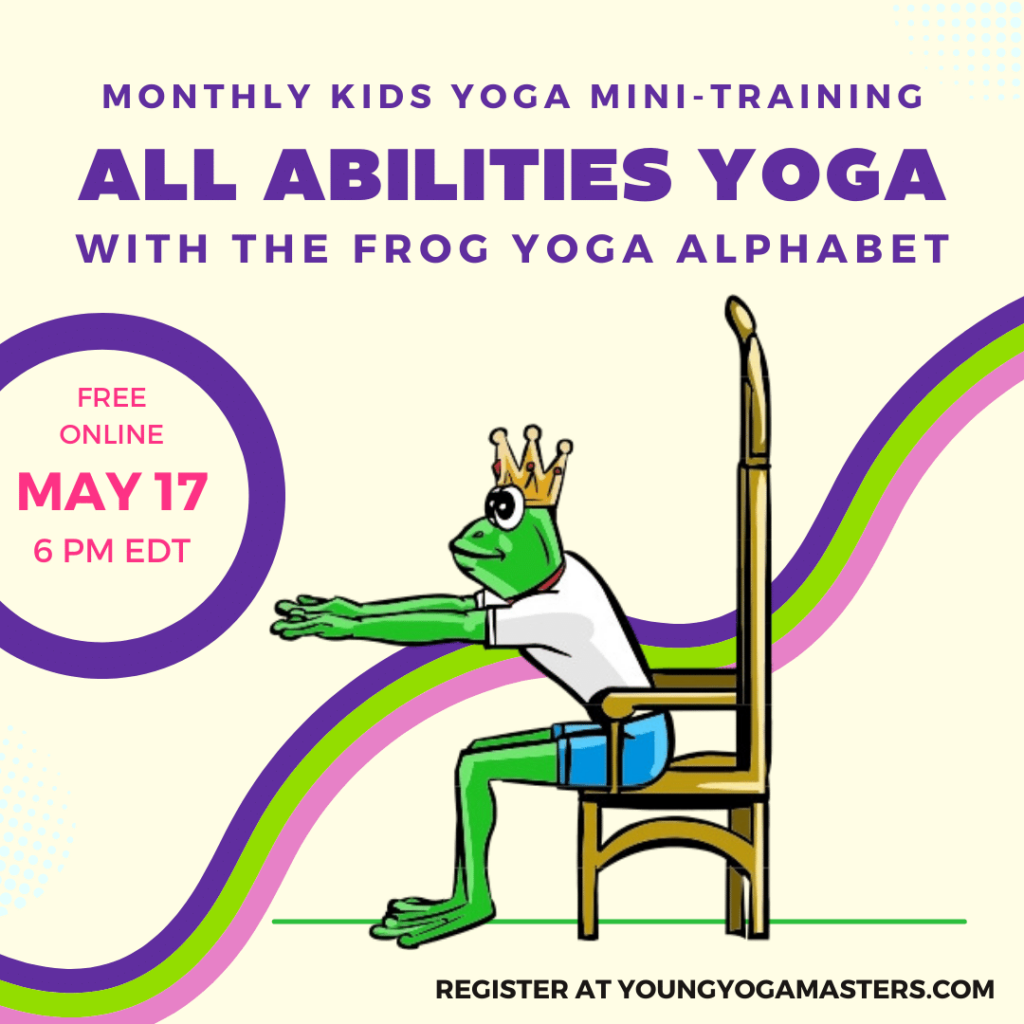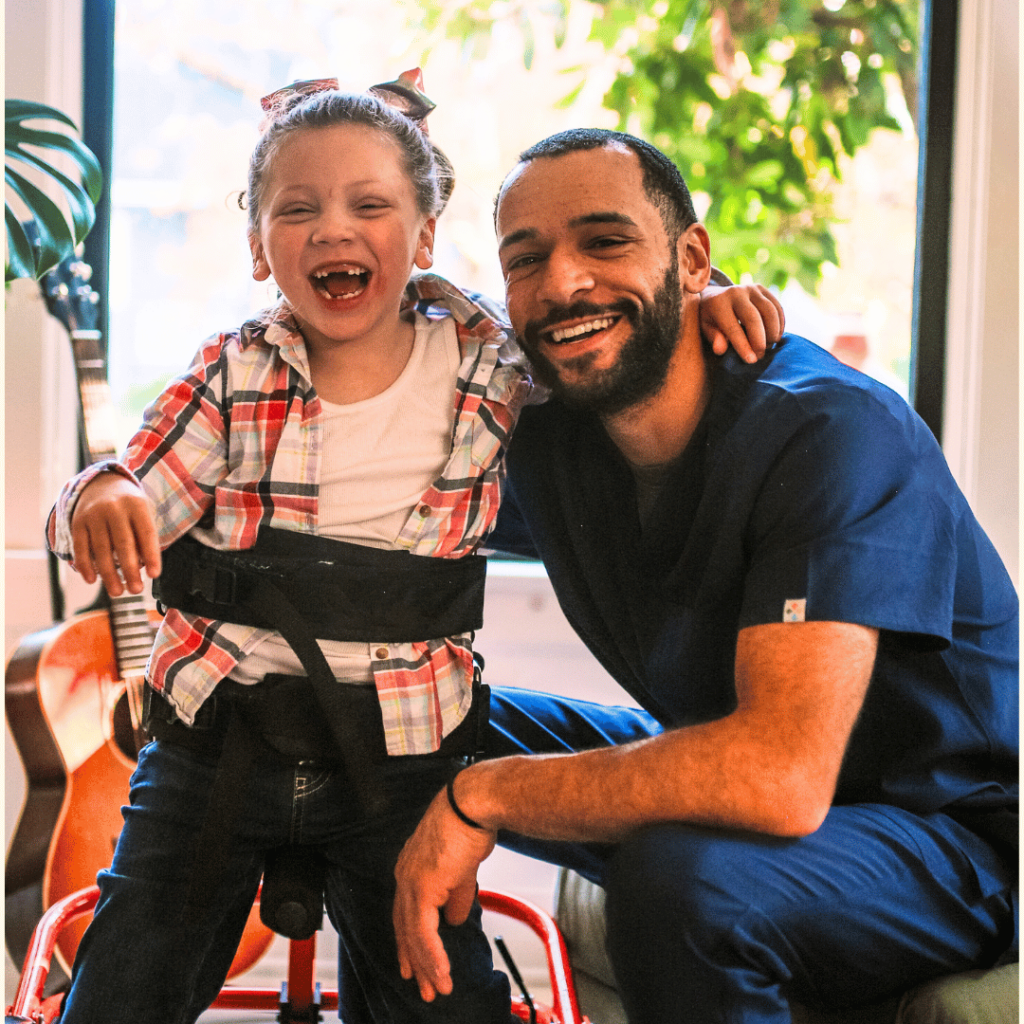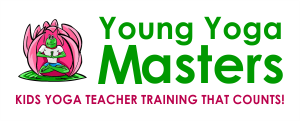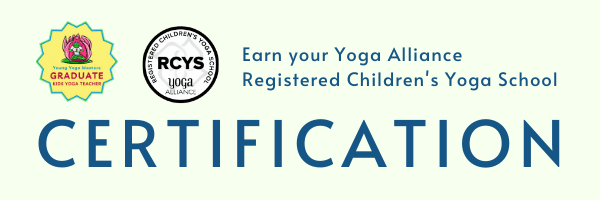When I first started teaching I had so much passion for yoga because it has transformed my life. Once I became a yoga teacher, I wanted everyone to discover it’s miracles. Finding a niche in children’s yoga, I began teaching in after school programs, community centers, and daycare centers.
The learning curve is steep to jump from adult yoga to kids’ yoga, but there was help out there to figure it out.
That curve became steeper the day I walked into one of my kids’ yoga classes and met a new student who used forearm crutches every day.

Mistakes to Avoid
I was unprepared and untrained to teach all abilities at that time, but I had to learn what I could because we were thrown into it together. What I saw was a need for:
- Less transitions, e.g. moving from standing to floor to standing again,
- More options in balancing poses,
- Practicing in community with everyone together in one class.
I’d like to say I got it right but unfortunately, I made a lot of mistakes. My lack of training led to some bad ideas, including unintentionally singling out the student by offering chair yoga only for her and asking her to be at the front of the class.
We both did the best we could with our limited knowledge until she moved to another school.

Teaching All Abilities in One Class
Years later, I showed up to teach a class which included a child using a walker. I had learned a few more skills about how to teach All Abilities Yoga by that time including:
- Putting out chairs for everyone,
- Offering everyone the option to sit on chairs or mats
- Offering many options for each pose.
- Doing breathing and mindfulness activities with everyone in a chair.
Understanding Able-ism
When I first started teaching, I had an ableist mindset, buying into the common misconception that yoga can heal anything and the “full expression of the pose”is the best version that everyone should work towards. It turns out that is just not true. My beliefs were more harmful than good and founded in the ableist mentality I had learned.
According to Accessible Living, ableism is “the discrimination of and social prejudice against people with disabilities based on the belief that typical abilities are superior. At its heart, ableism is rooted in the assumption that disabled people require ‘fixing’ and defines people by their disability. Like racism and sexism, ableism classifies entire groups of people as “less than’ and includes harmful stereotypes, misconceptions, and generalizations of people with disabilities.”
Examples of ableism show up in yoga everywhere. It starts when Chair Yoga is defined as a modified form of yoga.
In reality Chair Yoga IS yoga, not a modified form of it.
Asana is not about flexibility, according to the Yoga Sutras of Patanjali. Sutra 2.46 says:
Sthira sudhamasanam.
Asana is a steady, comfortable posture.
The 8 limb path describes asana as only one limb, and there is nothing about flexibility or pretzel poses in the description of asana.
Now We Can Do Better
It was hard to find out about modifying poses when I started teaching yoga, but it is a lot easier now.
A few excellent All Abilities books:
- Accessible Yoga: Poses and Practices for Every Body by Jivana Heyman.
- Yoga for Everyone: 50 Poses For Every Type of Body by Dianne Bondy
- Teach People not Poses: Lessons in Yoga Anatomy and Functional Movement to Unlock Body Intelligence by Mary Richards
Over time, my original nervousness has transformed into excitement about the idea of being better able to share yoga with all abilities and inspiring other teachers to do the same. I appreciate how much everyone benefits when everyone is welcomed into a class.
Inclusive Yoga Training
Learn more about creating more inclusive classes in the Inclusive Yoga Module. This module counts as 16 hours towards your 95 Hour Certificate.
You’ll practice chair yoga poses and understand how to quickly adapt your lesson plans for everyone.

